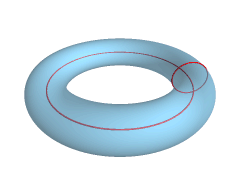|
(2017
midterm assignment) Model Student Midterm answers 2017 #1: Long Essays (Index) |
LITR 4328 |
 |
Jessica Zepeda
“American” Romance
Upon arriving to class I had never heard of or considered what the study of the
American Renaissance was or meant. So, to my surprise, when I discovered that
the American Renaissance was the era of romanticism in America I was both
overjoyed and relieved. My joy comes from the comfort of having prior knowledge
on the subject of romanticism, and my relief from knowing that I am finally
starting a class with my glass half full instead of half empty. Last semester I
took Dr. Marcoline’s class on British Romanticism, and learned about the terms
and concepts, apart from one or two, that we have studied and discussed in
class. However, in British literature, the gothic and sublime were normally kept
separate by their settings. The sublime being connected to nature and a godlike
sense of self, and the gothic being connected to rustic castles with a
troublesome past and the struggle within oneself between the darkness of strife
and conflicting emotions. Although American romanticism has both elements of
gothic and sublime, the same as the European romantics, the American romantic
writers do something the European romantics did not, and that combined both
elements of the sublime and gothic together.
The combination of both the sublime and gothic is something I consider to be a
unique trait of the era of romanticism in America. A trait that allows American
romantic writers to break away from their British counterparts, in the way of
romantic literature, and create a style readers would recognize to be unique to
American romanticism.
An example of this uniquely “American” style of
romanticism, as the combination of both the gothic and sublime, can be found in
Washington Irving’s work of Rip Van Winkle. The first depiction of this is found
in paragraph 24 of Irving’s work. In this paragraph, Rip is “working his
toilsome way through thickets of birch, sassafras, and witch-hazel, and
sometimes tripped up or entangled by the wild grapevines that twisted their
coils or tendrils from tree to tree, and spread a kind of network in his path.”
The excerpt from paragraph 24 of Irving’s
Rip Van Winkle speaks completely of nature. However, the nature depicted in
Irving’s writing is not that of the sublime,
as is formally associated with nature, but
instead entails terms of the sublime such as toilsome, thickets, tripped,
entangled, wild, twisted, coils, and tendrils. All these terms expressing some
kind of bondage and open resistance of its own natural, or normal, state of
beauty and goodness. Even the plants within nature described were dark and
villainous in name: sassafras and witch-hazel. All these names and traits,
normally found in a gothic setting, are being placed upon the sublime of nature.
Two other examples of the “American” romantic
combination of the gothic and sublime are Washington Irving’s work The
Legend of Sleepy Hollow and Edgar Allan Poe’s poem
Romance. In both pieces of
literature, nature is taken out of its place in the sublime and reconfigured to
meet the role of the gothic. In Irving's
The Legend of Sleepy Hollow an “enormous tulip-tree, which towered like a
giant above all the other trees of the neighborhood, and formed a kind of
landmark, Its limbs were gnarled and fantastic, large enough to form trunks for
ordinary trees, twisting down almost to the earth and rising again into the
air.” Irving here, different from Rip Van
Winkle, uses terminology for both gothic and sublime in this passage. Words
such as enormous, towered, giant, above, large, and rising are all words
associated to the sublime of nature. The sublime of nature being larger than
life, spectacle, and godlike. Where Irving, alongside the sublime, adds in words
such as gnarled, fantastic, twisting, and down. All words which describe the
darker more complex gothic tones of the setting. Once again proving the unique
nature of “American” romanticism. Even Poe in his poem Romance makes the
American association between both the sublime and the gothic with lines such as
“ Far down within some shadowy lake [1.4] … While in the wild-wood I did lie
[1.9] … Dying along the troubled sky [2.4].” Even Poe, arguably, the most
European “American” poet of the colonies at this time, combines together both
the gothic and sublime in his poetry. By using the words far down, shadowy,
wild, and troubled Poe is describing the gothic elements of a scene, but with
that scene taking place in nature and nature being part of the sublime Poe is
combining both the gothic and sublime together.
Waldo Emerson’s
Nature describes nature to be “a wild delight… for every hour and change
corresponds to and authorizes a different state of mind, from breathless noon to
grimmest midnight [11].” An accurate summary of the “American” outlook on
romanticism. For by placing gothic characteristics upon the sublime state of
nature, American romantic writers are transforming nature by adding the depth of
the gothic to the height of the sublime. The deep gothic tones of struggle and
emotional turmoil are found within the words used to describe nature in all four
texts, but nature itself coming to life is something distinctly tied to the
sublime in romanticism. So, in joining both these elements of romanticism
together “American” romantic writers are giving nature the ability to not only
reach the sublime of godlike heights and emotional enlightenment, but also the
trait of the gothic and the ability to struggle within itself in all its coils
and thickets. In placing both extremes of emotion and contemplation into nature,
“American” romanticism is allowing humanity to place and relate themselves to
nature on both extremes; making nature a place for the dark depth of thought and
not simply the inspiring revelation of thought. A trait that, in every way, make
this type of conjoined themes of the gothic and the sublime uniquely “American”
romanticism.
 |
 |
 |
